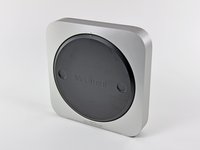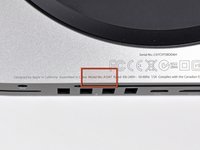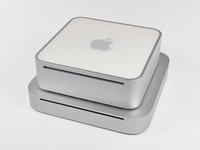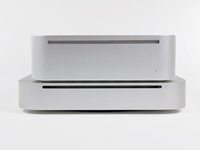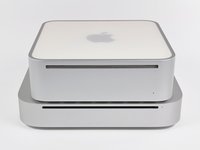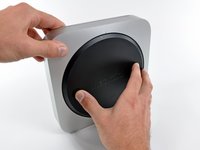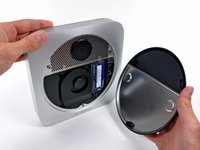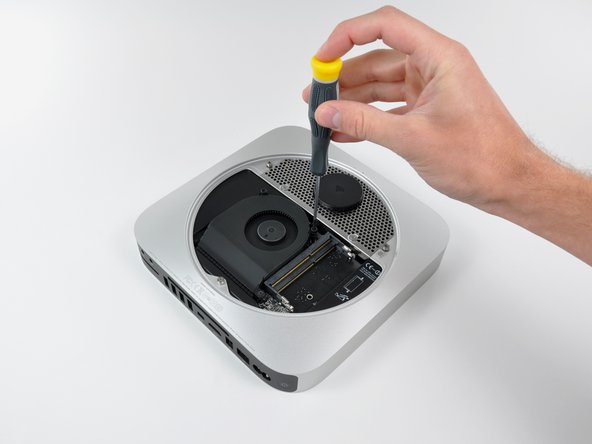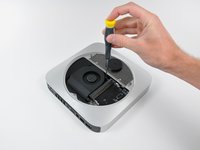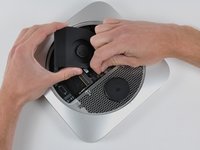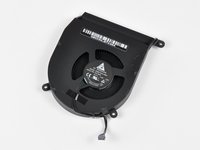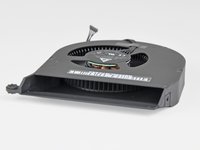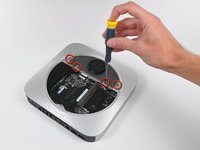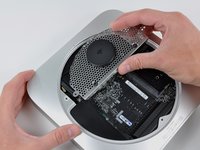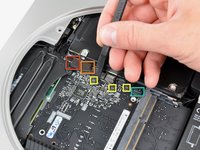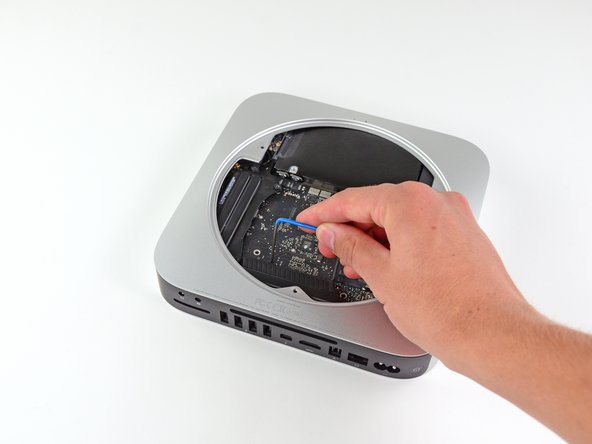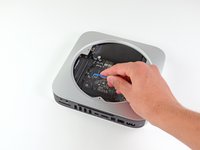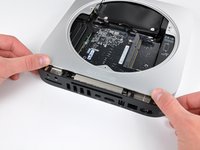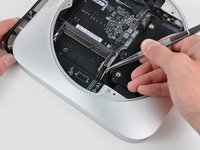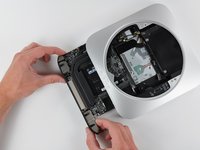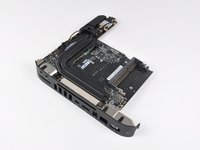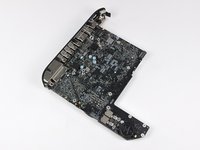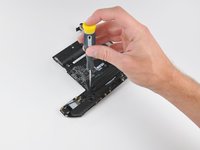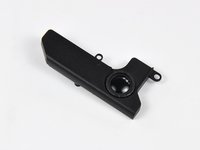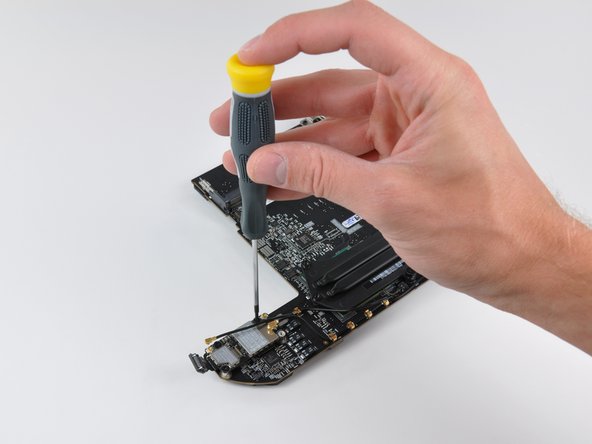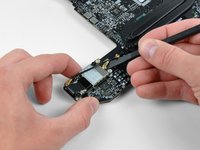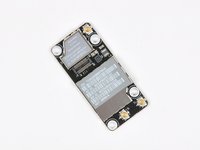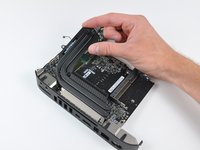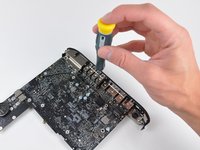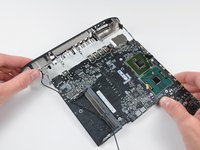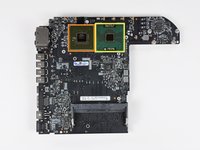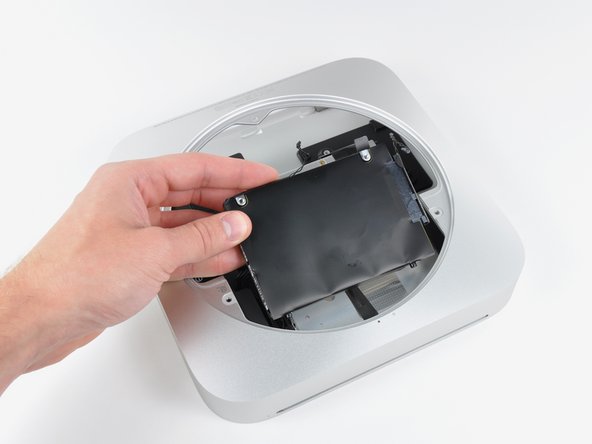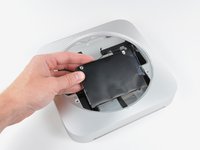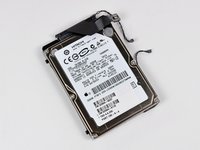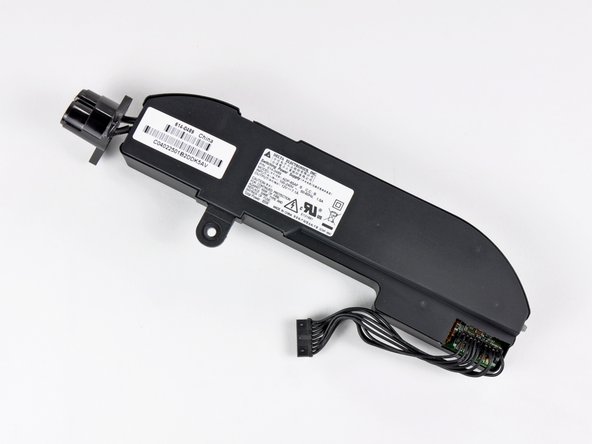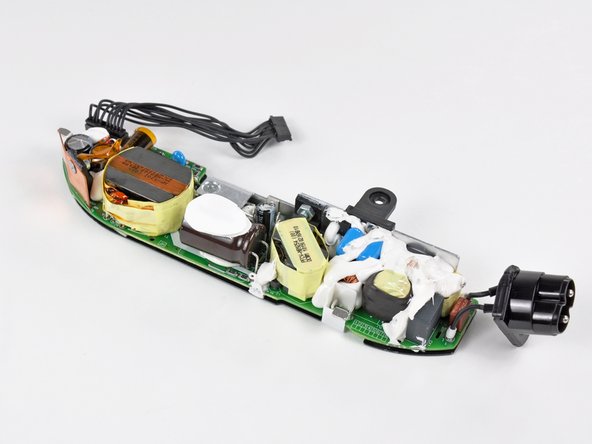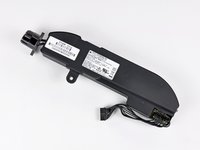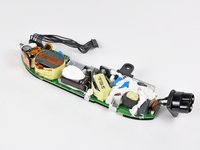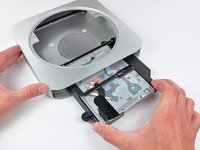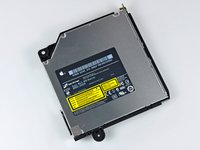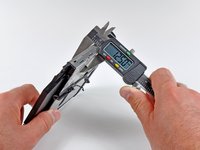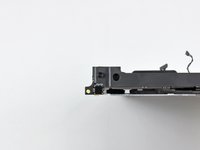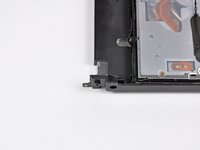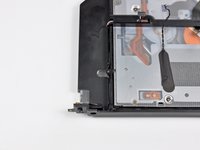Introduction
Go to step 1Join us as we take a peek inside at Apple's newest revision of the Mac Mini, now with an HDMI port!
Check out the YouTube video slideshow of the teardown as well!
What you need
-
-
Well folks, after much clamor, it seems the engineers at Apple have finally included an HDMI port in an actual Apple product.
-
Notable Tech Specs:
-
2.4 or 2.66 GHz Intel Core 2 Duo processor
-
2 GB of RAM (expandable up to 8 GB)
-
NVIDIA GeForce 320M graphics processor with 256MB of shared DDR3 SDRAM (the same as the most recent MacBook)
-
HDMI port with support for up to 1920-by-1200 resolution
-
AirPort Extreme 802.11n Wi-Fi wireless networking
-
SD card slot
-
-
-
Departing from previous generations, the Mini's unibody top enclosure is machined from a single block of aluminum.
-
Measuring 1.4 x 7.7 x 7.7 inches and weighing only 3 lbs, this is truly one for the books.
-
The black logo and other accents match quite nicely with the styling of Apple's iPad and recent iMacs. Congrats, Mini, you're no longer the black sheep of the family!
-
The model number for this new unit is A1347.
-
-
-
In comparison to the Mac Mini model A1176, the Mid 2010 is thinner and wider.
-
There is a definite difference in height between the Mid 2010 and previous iterations.
There isn't much difference in volume. The new model is just a few cubic inches smaller, and it contains the power supply now.
The old model can comfortably be laying on its side, saving desk space. I wonder how it would work with the new thinner case? I like the looks of the new design though.
-
-
-
With a simple counter-clockwise twist, the black access plate can be removed for easy RAM and fan access.
Apple's new motto is "If you machine it out of a solid block of aluminum, they will come."
I want the Apple shaped hole. With the bite!
rab777hp -
-
-
-
After removing two screws, the fan can be lifted out to access its power connector.
-
The connectors inside this machine look pretty consistent with those found in Apple's current product lineup. Nothing too new here.
-
All three fan screws are isolated with rubber dampers; a feature not seen on older apple machines. Low noise and vibration are big selling points for Apple these days, and the new Mini's idle emission of 14 dB is a testament to those design goals.
Since not everybody has seen the Mac Mini connectors before, they are removed most easily by lifting up on the wire-end of the connector. Use care as it is very easy to break the plastic that retains the pins in the connectors. Using something soft and thin, like the end of a plastic wire tie to lift the connector is safest. Do not pry against the motherboard. Not much lifting force is required to remove the connectors, but done incorrectly, the connectors can be damaged fairly easily.
The fan connector is a Vertical Insertion (JST)
• Important: These connectors are extremely fragile. Use extreme care. Major repairs may be needed if damaged.
• Use a black stick under the cable, next to the connector, with a finger over the top for support, or grasp cables with tweezers, and lift straight up to remove.
• Keep connector level to board when disconnecting and reconnecting.
• When connecting, verify that the grooves in the connector face down.
• Press evenly when reconnecting or connector can be tipped up and not fully seated.
-
-
-
The Wi-Fi antenna plate is held in place by four screws.
-
After a good deal of wiggling, the antenna plate can be slid out from under the lip of the outer case.
-
-
-
Removing the cowling gives access to various connectors on the logic board:
-
Hard drive flex cable
-
Optical drive flex cable (in the server model, this is where the second hard drive flex cable is)
-
Thermal sensor cables
-
Infrared board cable
If you are planning on removing the 'logic board' - disconnect all the indicated (colored square) connectors on the logic board. Note: The hard drive and DVD drive do not slide out with 'logic board' assembly. You will break a connector like I did if you do not disconnect all the connectors.
Second, the optical drive connector ripped right off the PCB, no fixing that...
As stated in the intro, "Teardowns provide a look inside a device and should not be used as disassembly instructions." Repair guides for this device can be found here.
-
-
Tool used on this step:Mac mini Logic Board Removal Tool$4.99
-
Behold, iFixit's specialized Mac Mini Mid 2010 logic board removal tool!
-
There are two blind holes in the case of the Mini that are meant for the ends of Apple's u-shaped logic board removal tool.
-
Being the shadetree mechanics that we are, we decided to circumvent the special Apple tool in favor of something that works just fine while keeping extra dollars out of Mr. Jobs' pockets.
There is a black torque screw to the left of the left side blind hole. It is removed in the photo but no reference to this in the guide. This has to be removed or the board won't slide forward.
As stated in the introduction, "Teardowns provide a look inside a device and should not be used as disassembly instructions." Keep an eye out for a full set of repair guides that will be released shortly.
-
-
-
Next to where the speaker was located, we find the AirPort Extreme card.
-
The Mac Mini Mid 2010 has 802.11n Wi-Fi wireless networking, as well as Bluetooth 2.1 with Enhanced Data Rate technology.
-
After disconnecting the remaining two antenna connectors and its data cable, the AirPort card can be easily removed from the logic board.
Great teardown - thanks for the info!
Has anyone had any success in upgrading the airport card?
In search of better Bluetooth range I'm considering retrofitting the Bluetooth 4.0 card that's in the late 2012 Mac mini, but the connectors for the FFC cable look to be in a different place.
Are the two cards interchangeable and would I need a new cable?
Thanks
-
-
-
The bare logic board.
-
The brains of the unit feature:
-
Intel P8600 2.4 GHz Core 2 Duo processor
-
NVIDIA GeForce 320M graphics processor with 256MB of shared DDR3 SDRAM
-
Other notable chips include:
-
Broadcom BCM57765 integrated gigabit ethernet and memory card reader controller
-
Cirrus 4206ACNZ audio controller
-
Delta LFE9249-R discrete LAN filter
Hi, David!
Congratulations, very Nice Tear Down!
I wish to hear something about the "Light Peak". So, let's wait for the new release of the Mac PRO. I hope we could see some "new" hardware.
Apple is just refreshing the "old decade" style CPU + GPU.
I was wondering for Intel Core i5 and NVidia GTX 480M.
May be in the new refresh of the iMac 27". But without the Light Peak, no chance! I will keep waiting for next years long!!!
Any way, thanks for your great collaboration!
I could learn that the new "Mac mini" is more for a MacBook than ever!!! It could follow the steps of the MacBook Pro as well, if Apple give some more minimal "space"
Is the CPU soldered onto the logic board? It looks like it may be glued based on the Macminicolo teardown. Is it upgradable? If so what socket does it use?
The processor is soldered to the logic board and is non-upgradable.
-
-
-
The Mac Mini comes with either a 320GB or 500GB SATA hard drive.
-
Sadly, there's only one hard drive in our non-server model.
-
Need more storage? Only time will tell if this Mac Mini is as easily modified as its predecessor. For now, we recommend just getting the server edition.
The main ribbon cable coming from the hard drive connector is the SATA to logic board cable. The other two small cables are thermal sensors. There is one thermal sensor attached to the hard drive cable and the other is attached to the other end of the hard drive.
What drive height room is there? Wondering if it will take 1TB 12.5mm drives like the current MacBook Pro does.
-
-
-
The new Mini's power supply churns out a minuscule 7 Amps at 12V. Compare that to the 25.8 Amps at 12V cranked out by the iMac Intel 27".
-
Like its iMac cousin, the Mac Mini finally says goodbye to external AC adapters.
-
-
-
The optical drive bay drive simply slides out of the aluminum unibody housing.
-
Well what do we have here? Is this a new optical drive? Why yes it is!
-
Hitachi-LG Data Storage (HLDS) Super Multi DVD Rewriter model GA32N
-
The optical drive is 12.5 mm thick, giving everyone a glimmer of hope for a sweet Blu Ray installation...
-
-
-
The remainders of the Mac Mini Mid 2010.
-
Macminicolo took apart the server version of the new Mini. Check it out if you want to see how Apple stashed the second hard drive.
-
Thanks for following iFixit during this historic moment. Until next time!
-
5 Comments
It seems the advantage of going with the server edition is the higher storage space and faster CPU. however you miss out on the DVD player. How easily do you anticipate it would be to upgrade the CPU on the non-server edition?
About Step 7, did you notice if the screw to the left of the RAM module has factory damage ?
There is a guy that claims that on different models he found stripped screws and that such stripped screw could eventually invalidate the warranty.
I didn't notice anything unusual when we were taking it apart - the screws seemed fine to me. The only time I've seen damaged screws is when we've disassembled a few random certified Apple Refurbished devices.
Do you need a CDs drive ?
The CD drive is not necessary. You can replace it with a HDD / SSD with an adapter.






